55 F. high in the Twin Cities Tuesday.
53 F. average high on October 27.
67 F. high on October 27, 2014.
October 28, 1960: A 29 day dry stretch in west central Minnesota ended.
A Gentle Canadian SlapFirst Flakes
Tonight?
This
is going to be even better than the "Wild Thing" at Valleyfair! No risk
of barfing, no long lines, and it's totally free. Every Minnesota is
invited to ride the Canadian Express, a temperature roller coaster like
no other. A few extra layers, good tires, an ice scraper? You're all
set. Please keep your hands inside and enjoy the ride!
In reality this is just the appetizer, the opening salvo of c-c-cold to come.
Temperatures
tumble through the 40s today with a cold rain as a storm spins up over
the Great Lakes.
The lowest mile of the atmosphere may be just cold
enough for wet snowflakes to mix in
tonight.
Ground temperatures are still mild; I don't expect any slush in the
metro, but a snowy inch or two may pile up on unsuspecting squirrels
from Mille Lacs to Park Rapids.
Rain showers return
Saturday, but the sun comes out
Sunday as temperatures push into the 60s. I could see 70F here
Monday. I feel a sick day coming on.
No full frontal arctic assaults; Canadian air dribbles south in the coming weeks, giving us a chance to catch our breath.
Fasten your seatbelt.
* Photo courtesy of Lisa Valdez, who snapped this photo at Cedar Lake over the weekend. Nice.
Chilly Surge.
High-resolution NAM guidance from NOAA shows a relatively mild start
this morning, but watch the leading edge of much colder air plow east
during the afternoon and evening; temperatures falling through the 40s
into the 30s, changing a cold rain over to some wet snow tonight.
Source: AerisWeather.
Definition of Raw.
Tumbling temperatures, fits of rain and sustained winds of 20-30 mph,
with higher gusts. Sounds like a lovely Wednesday. Yes, it will
definitely look like October out there today. Source: Aeris Enterprise.
Snowfall Potential.
Some of the models aren't taking mild ground temperatures into account;
snow will melt on contact for a time tomorrow night with surface
temperatures just above 32F. That said, I wouldn't be shocked ot hear of
some slushy lawns from the MSP suburbs to St. Cloud, maybe an inch or
so from Mille Lacs to Brainerd and Bemidji. Source: Aeris Enterprise.
10-Day Snowfall Forecast.
Here is NOAA's GFS accumulated snowfall product, showing Wednesday
night's slush event up north, another potential snowfall for North
Dakota by the end of next week.
Accumulated Rainfall.
Since we're comparing model runs here's the 84-hour NAM model, showing
heavy showers and T-storms pushing across the Ohio Valley into the
Northeast. Much of this moisture is leftover from Hurricane Patricia,
which hit the west coast of Mexico as a rare Category 5 storm last
Friday. Source: AerisWeather.
Chilly Midweek - Lukewarm by Monday?
All the models are in fairly good agreement that temperatures will
moderate over the weekend; reaching low 60s Sunday, possibly 70F on
Monday. Hey, what's 40 degrees among friends? Source: Aeris Enterprise.
Historic High Tides from the Supermoon and Sea Level Rise Flood the Southeast Coast.
It doesn't take a tropical system or even a Nor'easter to whip up
serious coastal flooding anymore. You can go right on denying climate
change, warming oceans and rising seas - until water shows up in your
family room. Here's an excerpt from The Washington Post's
Capital Weather Gang: "
Ocean
water surged into neighborhoods on the Southeast coast on Tuesday
morning during high tide, pushing gauges well beyond predicted
levels. Seemingly overnight, we’ve entered an era where king tides
compete with hurricanes in the water level record books. Tuesday
morning’s high tide peaked at 8.69 feet in Charleston, over a foot and a
half higher than the predicted level. The highest crest on record in
Charleston was 12.56 feet on Sept. 21, 1989 — the day that Hurricane
Hugo made landfall in South Carolina. The water level near Savannah,
Ga., reached 10.43 feet, which was the third highest on record for the
station..."
Photo credit above: "
The scene in Charleston, S.C., on Tuesday morning during high tide." (Jessica Hofford)
Rising Seas Pose Growing Flood Threat.
Miami and much of south Florida floods now during a "king tide" with a
full moon, no storm required. Here's an excerpt of a story at
ClimateWire and
Scientific American: "
The
Atlantic will sneak up to one of its highest points tomorrow as
celestial influences create king tides along the East Coast, three years
after similar tides and rising seas added to the huge wall of water
that crashed onto the coastline during Superstorm Sandy. The king tide
comes amid new warnings that electric utilities could face serious
flooding as low-lying power plants are exposed to higher oceans over the
coming decades. Experts are also concerned that floods reaching farther
inland could unlock bacteria that have been stuck in dry soil and
spread disease in public waterways..."
Photo credit above: "
King
tides are natural events that happen twice a year. By 2060 to 2070 we
could be experiencing tides of at least this magnitude every month,
rather than just twice a year due to climate-change induced sea level
rise. Pictured above, the erosive effects of a king tide on the Gold
Coast, Queensland."
Bruce Miller/CSIRO, CC BY 3.0
Mexico Exhales, But Hurricane Highlights Weather's New Extremes.
InsideClimate News connects the dots; here's an excerpt: "...
Mexico
has had a lot of company in bracing for a superstorm. There have been a
record 22 storms falling into Category 4 or 5 storms in the Northern
Hemisphere this year, according to the Weather Channel.
Eastern Pacific nations have been slammed seemingly nonstop by strong
hurricanes in recent years, first with Typhoons Bopha in 2012, Haiyan in
2013, Rammasun in 2014 and several this year, killing tens of thousands
of people and causing billions of dollars in damages.
Scientists are quick to point out that Hurricane Patricia is indicative
of what will likely happen as oceans and the atmosphere warm even more
over the next century, fueling stronger hurricanes..."
Image credit above: NASA-NOAA's Suomi NPP satellite.
A Hugely Powerful Hurricane Did Surprisingly Little Damage. FiveThirtyEight provides more context on Patricia - here's a link and excerpt: "...Patricia hit near
Cuixmala, Mexico, as a Category 5, with winds estimated to be 165 mph
and a low pressure of 920 mb. Fortunately, the landfall area, on the
Pacific coast, was sparsely populated,
and the storm quickly began losing power. Within three hours, it was
down to 130 mph, and though it caused property destruction, there were no reports of deaths
as of Saturday morning. Patricia became only the eighth hurricane in
recorded history to make landfall in the United States or Mexico at
Category 5 status. It was only the second to do so as a hurricane that
formed in the Pacific Ocean..."
Photo credit above: "A
man is ferried across a flooded street by boat two days after Hurricane
Patricia, in the village of Rebalse, Jalisco State, Mexico, Sunday,
Oct. 25, 2015. Patricia roared ashore in Mexico on Friday as a Category 5
terror that barreled toward land with winds up to 200 mph (320 kph).
But the arrival of the most powerful hurricane on record in the Western
Hemisphere caused remarkably little destruction." (AP Photo/Rebecca Blackwell)
What Is It Like Flying Through 200 MPH+ Winds?
Check out the video and perspective from the Hurricane Hunters who made
multiple passes through Hurricane Patricia as it was approaching
coastal Mexico. You think you've been on some rough flights? Not even
close to what they experienced. Here's an excerpt from
The Independent: "...
Joseph
Klippel, a NOAA flight engineer, described the experience on Facebook,
writing: “This most definitely is the most powerful storm ever in the
western hemisphere. “We were thumped so hard that our flight director’s
keyboard flew off his station and all of his data was dumped. “We
circled for an hour afterwards as he reconstructed the penetration, made
more difficult by the fact the we encountered record setting pressures
and airspeeds. This is such a cool job!” Colleague Lonnie Kregelka wrote
that they recorded winds of up to 235 mph and pressure of 879 milibars -
the lowest ever recorded in a hurricane..."

Patricia Shows Need for Better Hurricane Forecasting.
From tropical storm to Category 5 in one day? I've never seen that
before. The models didn't catch it - nobody did, so there is still
plenty of room for improvement. With rapidly warming oceans (El Nino,
warming of the planet, etc) we are going to need new and better tools to
stay ahead of increasing weather volatility. Cutting funding for
hurricane research seems like a very bad idea. Here's an excerpt from CNN: "...Patricia
intensified not just by 35 mph, but by over 120 mph in 24 hours. That's
not just rapid intensification; that's mild-mannered Bruce Banner
turning into The Hulk in just moments. And Patricia completed the
transition less than 24 hours before landfall, which is like Banner
turning green while standing in downtown Manhattan. Could forecasters
have somehow seen it coming? Not with today's science. None of the
models came close to predicting Patricia's explosive intensification. Remedying this has been recognized for some time as a top science priority..."
Is It Time to Rethink What a "Major" Hurricane Really Means?
Wind speed is one measure, perhaps not the best measure of the
potential threat to life and property. Here's an excerpt of an
interesting article at WXshift: "...Using
winds as the only measure of a storm’s major-ness misses rain and storm
surge, which can drive flooding and the majority of the damage
associated with hurricanes. Hurricane Sandy and Irene were both Category
1 storms (and in Sandy’s case, it wasn’t even technically a hurricane
when it made landfall) yet they both cost billions. “Every tropical cyclone is unique,” Steven Bowen,
a meteorologist at re-insurer Aon Benfield, said. “As Hurricane Sandy
showed the world, just because a storm does not have an official
declaration of being a ‘major’ hurricane at Category 3 or above
intensity does it mean that consequential societal impacts cannot
occur.” That storm caused an estimated $67 billion in damage when it
made landfall in the Northeast nearly three years ago, with the vast
majority due to flooding and not the storm’s Category 1-level winds..."
States Where Disaster Strikes Most.
Looking back over 8 years worth of records the most expensive natural
disasters have been in the south, with the exception of Colorado (fire)
and New Jersey (Sandy). Here's an excerpt from
Kiplinger.com: "...
Working
with data from the National Weather Service that covers the last eight
years or so, we identified the states that have had the most damage.
I'll tell you about four of them. Number 1 on the list is New Jersey,
and it's almost all due to Sandy, the storm that did billions of
dollars of damage to New Jersey's exposed coastline. New Jersey doesn't
normally get a lot of natural disasters, but that one was a
doozy.Superstorm Sandy was the second-most expensive storm in U.S.
history. Hurricane Katrina was the worst. But the data we have from the
federal government starts after Katrina struck in 2005. Yet even without
Katrina in the count, Louisiana has still seen the
eighth highest damage losses in recent years. That's life on the Gulf
Coast, it would seem -- other storms, such as Hurricane Isaac, in 2012,
have hit the state hard..." (File photo: FEMA).
One of Earth's Driest Places is Now A Pink Flower Wonderland. One of the driest spots on the planet is now bright pink. More symptoms of a strong El Nino? Check out the photo essay at
Mashable: "
Parts
of Chile's Atacama Desert, one of the driest places on Earth, look like
a psychedelic wonderland as pink mallow flowers bloom in the valley,
following a year of unprecedented rain. Massive downpours in March
gave parts of the desert its first taste of rain in almost seven years.
Some areas got as much as seven years' worth of rain in just 12 hours..."
Photo credit above: MARIO RUIZ/EPA.
Crazy Sea Surface Temperature Anomalies.
Last night I noticed that Pacific Ocean water temperatures off the
coast of Los Angeles are 6F warmer than average for this time of year,
more fuel for potentially big storms later this autumn and winter.
Source:
earth.nullschool.net.
Start-Ups Take On Challenge of Nuclear Fusion.
Could there be a radical innovation that speeds up our transition into a
clean-energy economy? I sure wouldn't bet against it. Somewhere,
someone in a garage is tinkering on new energy sources that may
transform the planet. Here's an excerpt from
The New York Times: "
A
group of start-ups is promising a new and virtually unlimited source of
power, one that produces none of the gases scientists say contribute to
global warming. The only problem? A way to harness the energy source,
nuclear fusion — the reaction that gives birth to sunlight — still needs
to be invented. Such an achievement has long evaded government
scientists and university researchers, despite decades of work and
billions of dollars in research. But backed by hundreds of millions in
venture capital and some of the wealthiest people in the technology
industry, a handful of young companies say they can succeed where
government has fallen short..."
Photo credit above: "Michl Binderbauer of Tri Alpha Energy, a fusion start-up." Credit Emily Berl for The New York Times.
Everything You Think You Know About Happiness is Wrong. Picking up on the previous story here's a snippet from a story at Quartz: "For
many of us, happiness is the ultimate goal in life, worth pursuing
above all else. If you’d asked me a few months ago, I would have agreed.
But recently, I’ve been thinking about the kinds of mistakes we make
when pursuing happiness. I’ve been wondering whether the biggest mistake
might be seeing happiness as something we should be aiming for at all...."
Note to Self: Try Not to Anger Vegans. If you want to kill a couple minutes of time check out this story at
someecards.com,
showing the response from a Dublin, Ireland pub owner who posted a
request online, asking for notice if diners want non-traditional
(non-meat) options. The response was amazingly negative. And then it
went downhill from there. Here's an excerpt: "
The White Moose Café seems like a completely normal eatery in Dublin serving a mixture of vegetables and meats (like bacon, which the WHO just tragically announced causes cancer). The White Moose is owned by a man named Paul Stenson. Apparently, back in August, the staff had a run-in with a vegan customer
who was perturbed to find few dishes on the menu that worked for her
chosen diet. Stenson posted the short rant below about calling ahead to
restaurants if you wish to be accommodated..."
TODAY: Cold rain as temperatures fall. Gusty winds. Winds: NW 15-25. High: 46 (falling)
WEDNESDAY NIGHT: Showery rains may mix with a few flurries late - an inch of slush up north? Low: 37
THURSDAY: Showers taper, some PM sun. Winds: NW 15-25. High: 49
FRIDAY: Partly sunny, seasonable temperatures. Winds: S 10-15. Wake-up: 37. High: 55
HALLOWEEN: Unsettled, few showers possible. Winds: SW 10-15. Wake-up: 43. High: 57
SUNDAY: Better day of the weekend. Mild sun. Winds: S 10-20. Wake-up: 42. High: 63
MONDAY: A fine, lukewarm November day. Partly sunny. Wake-up: 50. High: 68
TUESDAY: Intervals of sun, not bad for early November. Wake-up: 52. High: 61
Climate Stories...
Greenland is Melting Away. The New York Times has a remarkable,
interactive presentation
focused on measuring the rate of Greenland ice melt and implications
for sea level rise, and the Washington D.C. politicians who are
attempting to complicate this essential task. Here's an excerpt: "...
But
Mr. Overstreet’s task, to collect critical data from the river, is
essential to understanding one of the most consequential impacts of
global warming. The scientific data he and a team of six other
researchers collect here could yield groundbreaking information on the
rate at which the melting of Greenland ice sheet, one of the biggest and
fastest-melting chunks of ice on Earth, will drive up sea levels in the
coming decades. The full melting of Greenland’s ice sheet could
increase sea levels by about 20 feet..."
As The Seas Rise. Managing Retreat Along New York City's Coasts.
New Republic takes a look at how rising sea levels are already impacting some of New York's neighborhoods; here's a clip: "...
The
United States is eleventh on the list of the countries most at risk to
sea level rise, finishing just behind the canal-riddled Netherlands,
deltaic Bangladesh, and the island nation of the Philippines. We are
going to have to figure out what to do with our densely populated
coasts, and soon, because by century's end many of our low-lying
communities will be underwater. While New York City's response to
coastal disasters has long been to build it back, after Sandy a handful
of neighborhoods—like the laissez-faire, climate change denying,
right-wing neighborhood of Oakwood Beach—began to experiment with larger
scale solutions that most post-disaster plans scrupulously avoid. Like
retreat..."
GOP Rep: Congress Should Focus More on Climate Change.
Representative Carlos Curbelo's district is in Florida, on the front
lines of rising seas tied to a warming planet. Here's an excerpt of a
story at
TheHill: "
A
Republican lawmaker is pushing Congress to focus more on climate
change, calling it “one of the major challenges of our time." In a Miami
Herald op-ed,
Rep. Carlos Curbelo (Fla.) said lawmakers need to a better job of
focusing on ways to cut carbon emissions, invest in clean energy and
combat climate change. “To view climate change through partisan lenses
only detracts from efforts to discover practical solutions,” Curbelo
wrote over the weekend. “This debate should not devolve into a petty
competition between Republicans and Democrats...” (Photo credit: Greg Nash).
Children's Health "Uniquely" Affected by Climate Change, Pediatricians Say.
The Guardian has more details; here's a clip: "...
Children are particularly vulnerable to the effects of climate change, according to a new policy statement from the American Academy of Pediatrics (AAP). The statement, published in the online journal Pediatrics
on Monday, urged pediatricians and politicians to collaborate to
protect children from climate-related threats. Such threats include
natural disasters, heat stress, lower air quality, increased infections,
and threats to food and water supplies..."
Hurricane Patricia, Climate Change and God's Call to Protect Creation. Here's an excerpt of an Op-Ed at
Huffington Post from Rev. Dr. Chuck Currie: "...
For people of faith, this is yet another rally cry for action to combat climate change. Faith leaders have issued a statement
to those preparing the Paris accord noting that: "Our religious
convictions and cosmological narratives tell us that this earth and the
whole universe are gifts that we have received from the spring of life,
from God. It is our obligation to respect, protect and sustain these
gifts by all means." Increasingly, the fight to address climate change
takes on a sense of urgency as we reach milestones
where repair of the environment might be past our ability to control.
If this occurs, we fail God and sentence our children and their
descendants to a future of hardship that is difficult to imagine..." (File image: NASA).
Putting Goldilocks To Work.
The Economist
takes a closer look at new research showing the potential economic
impact of continued warming of the planet; here's an excerpt that caught
my eye: "...
A paper published this week in Nature challenges
this finding. The authors—Marshall Burke, Solomon Hsiang and Edward
Miguel—suspected that economists had been looking for the wrong thing: a
linear relationship between temperature and growth. Instead, they
looked for an optimal temperature, on the assumption that excessive cold
could harm growth as much as punishing heat. That is exactly what they
found: hotter-than-usual years benefit countries, rich and poor alike,
up to an average annual temperature of 13°C, after which hotter weather
begins to sear growth. That allowed them to draw inferences about the
likely effect of climate change: for Brazil, for example, an increase in
temperature of 3°C will lead to a fall in output of 3%..." (Graphic: The Economist).
For GOP and Climate Change, Time Has Stood Still Long Enough. TheHill
has an Op-Ed that puts Republican resistance to getting serious about
climate change into a larger context; here's an excerpt: "...
How can
it be that today, in 2015—a quarter of a century after Margaret
Thatcher underscored the need to act—most of the GOP presidential
candidates and a significant majority of Republicans in Congress remain
unwilling to take climate change seriously? This disconnect has
occurred, in large part, because the Republican Party has been
increasingly catering to its most radical elements—which include a vocal
minority opposed to action on climate change. Whether it is members of
Congress fearing a primary challenge, candidate selection being ceded to
a handful of convention delegates, gerrymandered safe districts, GOP
leaders giving a vocal minority outsized influence, or just rank
partisanship, the Party has been veering ever further towards the
fringe..." (File image: NASA).
 Middle East May Suffer "Intolerable" Heat, Climate Study Warns
Middle East May Suffer "Intolerable" Heat, Climate Study Warns.
A projected heat index of 170F? Welcome to the suburbs of Venus. It's
not a stretch, considering a town in Iran saw a heat index of 163F in
July. Here's an excerpt from
Bloomberg Business: "...
Extreme
heat waves with conditions “intolerable to humans" may become a regular
occurrence in the Persian Gulf by century’s end, according to a study
evaluating the consequences of unchecked global warming. Temperature and
humidity levels exceeding anything previously recorded on earth may
bake major cities including Abu Dhabi, Dubai, Doha and Dharhan,
according to the research
published Monday in the journal Nature Climate Change. Less severe but
still “extremely dangerous" heat waves, now seen once every 20 years or
so, would become “the normal summer day," said Elfatih Eltahir, an
engineering professor at the Massachusetts Institute of Technology who
co-authored the paper..."
Temperatures Will Be Too High for Human Survival in Persian Gulf. Here's an excerpt from
New York Magazine: "
Because
of global warming, by the end of this century there will be days when
it will be hot and humid enough that a human would not be able to
survive outside in the Persian Gulf. A study
published Monday predicts that by 2100 muggy conditions would prevent
the body from reducing its temperature through sweating, putting anyone
without air conditioning — or anyone working outdoors — at risk of
death, the Times reports..."
Future Temperature in Southwest Asia Projected to Exceed a Threshold for Human Adaptability. You think it's hot now in Saudi Arabia and Iran? Give it a few years. Here's an excerpt from new research at nature.com: "A
human body may be able to adapt to extremes of dry-bulb temperature
(commonly referred to as simply temperature) through perspiration and
associated evaporative cooling provided that the wet-bulb temperature (a
combined measure of temperature and humidity or degree of ‘mugginess’) remains below a threshold of 35 °C. (ref. 1).
This threshold defines a limit of survivability for a fit human under
well-ventilated outdoor conditions and is lower for most people..."
Catholic Church Leaders Issue Appeal on Climate Change. The New York Times reports; here's the introduction: "
Roman
Catholic cardinals, patriarchs and bishops from around the world on
Monday appealed to climate-change negotiators to approve a “fair,
legally binding and truly transformational climate agreement” when they
meet at a widely anticipated United Nations
conference in Paris next month. Representatives of the church from five
continents signed the appeal in Vatican City. They said it was inspired
by Pope Francis’ sweeping encyclical on the environment, “Laudato Si,” issued in June, which forcefully calls for action to stem environmental destruction and climate change..."
Financial Fears Fueled Exxon Shift on Climate Change. The Dallas Morning News
takes a look at how attention to the bottom line framed the public
response to Exxon's own internal scientific research; here's an excerpt:
"
Throughout much of the 1980s, Exxon earned a public reputation as a
pioneer in climate change research. It sponsored workshops, funded
academic research and conducted its own high-tech experiments exploring
the science behind global warming. But by 1990, the Irving-based
company, in public, took a different posture. While still funding select
research, it poured millions into a campaign that questioned climate
change. Over the next 15 years, it took out prominent ads in The
Washington Post, The Wall Street Journal and The New York Times,
contending climate change science was murky and uncertain. And it argued
that regulations aimed at curbing global warming were ill-considered
and premature..."
File photo credit above: The Associated Press. "Exxon
Corporation chairman L.G. Rawl (right) and president Lee Raymond
(center) greeted shareholders after their annual meeting in Dallas in
1992. The company’s shift — from embracing the science of climate change
to publicly questioning it — emerged from interviews with former and
current Exxon Mobil employees."
Exxon Sowed Doubt about Climate Science for Decades by Stressing Uncertainty. Manufactured
misinformation, weapons of mass confusion, because the truth might
interfere with the bottom line? Where have we heard that before (tobacco
lobby). Here's the next story in a powerful series at
InsideClimate News: "...
Exxon
wanted scientists who disputed the mainstream science on climate change
to oversee Washington's work with the IPCC, the authoritative body that
defines the scientific consensus on global warming, documents written
by an Exxon lobbyist and one of its scientists show. The company
persuaded the White House to block the reappointment of the IPCC
chairman, a World Bank scientist. Exxon's top climate researcher, Brian Flannery,
was pushing the White House for a wholesale revision of federal climate
science. The company wanted a new strategy to focus on the
uncertainties..."

ExxonMobil Pioneered Climate Change Research Since the 1970s, and Now It's Attacking Media Reporting On That.
When backed into a corner attack the messenger. Which, based on recent
revelations, is what Exxon may have done with its own in-house climate
scientists decades ago, because of fears of regulation and impact on the
bottom line. Here's an excerpt from
Quartz: "...A
long
the way, a consensus developed that the ramifications of climate change
were perilous. As far as a response, one option was to keep measuring
to see whether warming was really happening. The only trouble with that
course, one scientist said, was that by the time you had
incontrovertible evidence, it might be too late to do anything. In 1990,
according to a piece published Oct. 23
in the LA Times, Exxon made a choice—in terms of its public policy, it
would ignore the nuances of the climate science and emphasize the
uncertainties. Exxon’s manager of science and strategy development told
fellow executives that acting against climate change would entail
curtailing the use of fossil fuels, or draconian regulation of
emissions, that would would “alter profoundly the strategic direction of
the energy industry...”

Climate Change is Already Costing Us Billions of Dollars Every Year. Here's an excerpt from
Motherboard: "
Climate
change has already begun to cost us, and it’s only going to get worse.
Hurricanes, intensified in size and frequency by climate change, are
taking a massive financial toll already, according to a new paper. The
study, published in Nature Geoscience this week,
found that an increase in property dollar amounts lost over the past
several decades in a case study was due to hurricanes intensified by
global warming. Conducted by researchers from the Universidad Nacional
Autónoma in Mexico and VU University in the Netherlands, the researched
used statistical models to estimate the economic losses from storms from
1900 to 2005, taking into account societal change and wealth gains over
the years..."
File photo credit above: "
New Orleans shortly after Katrina". Image:
National Archives.

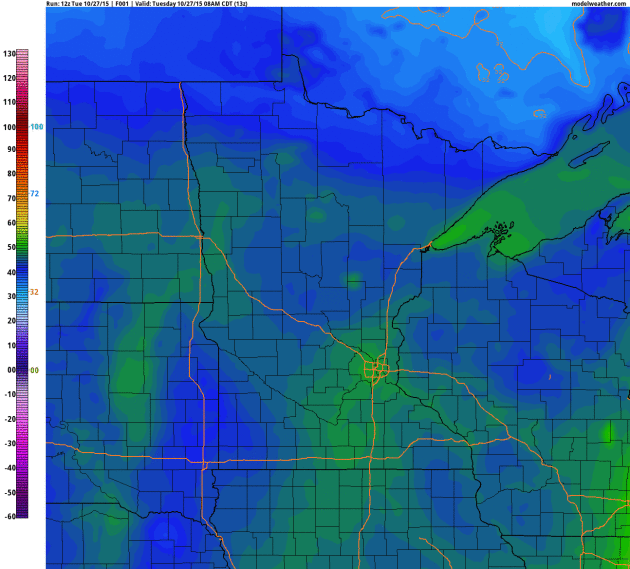
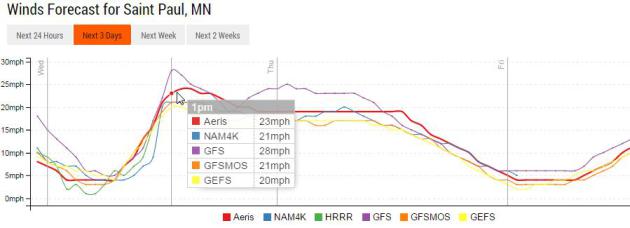
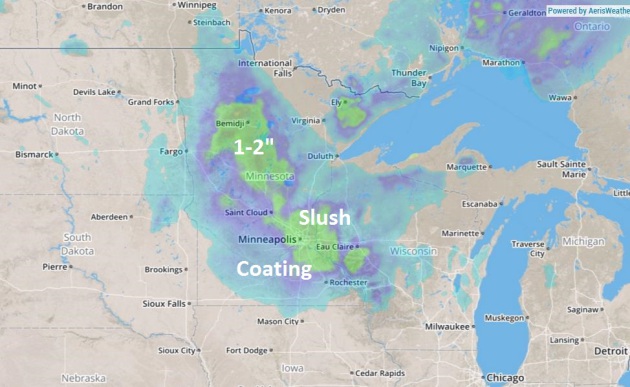
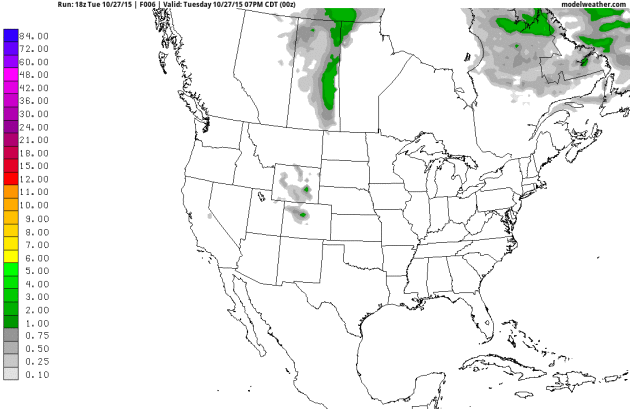
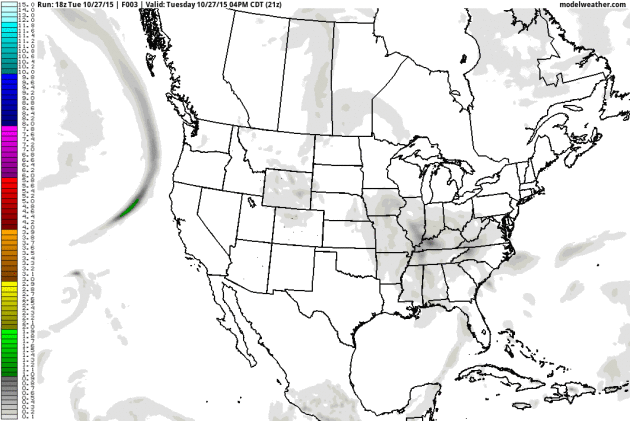

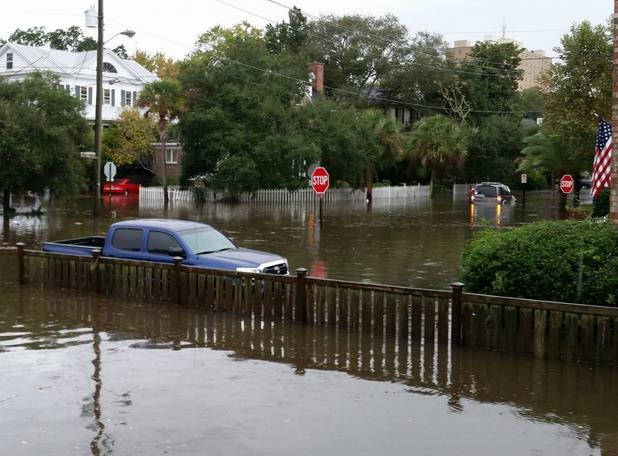
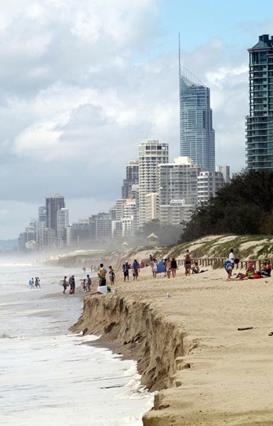
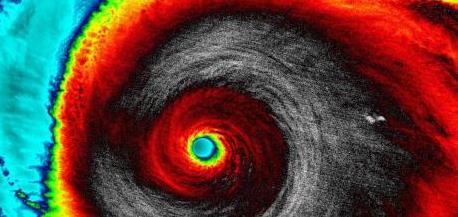
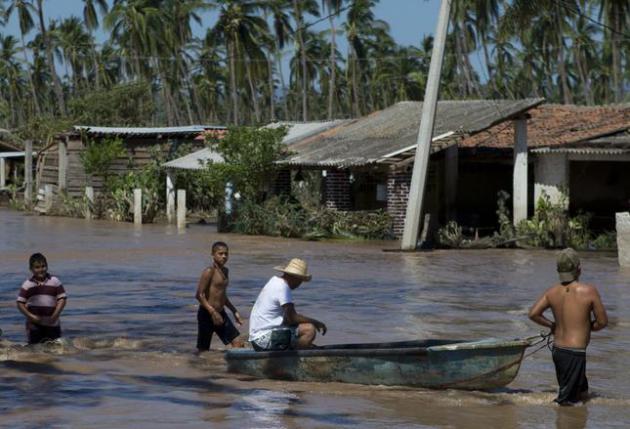

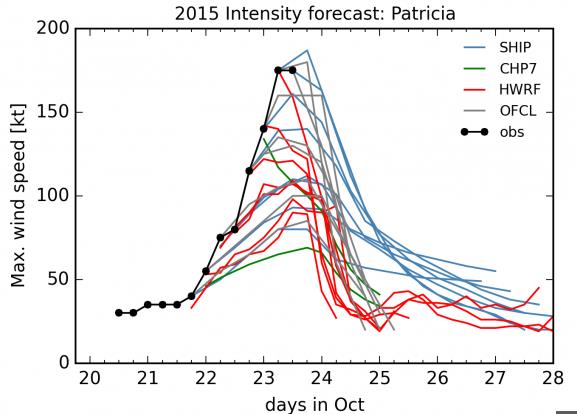
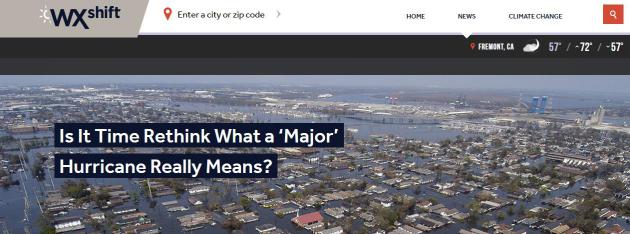
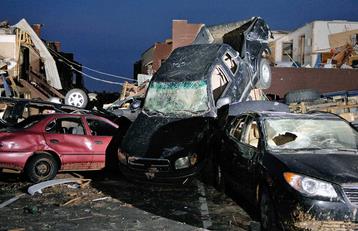
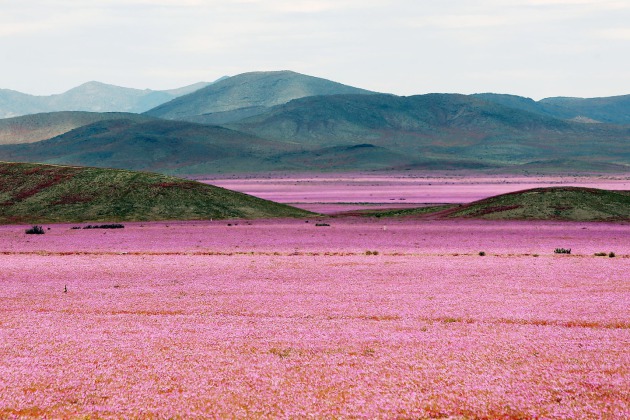
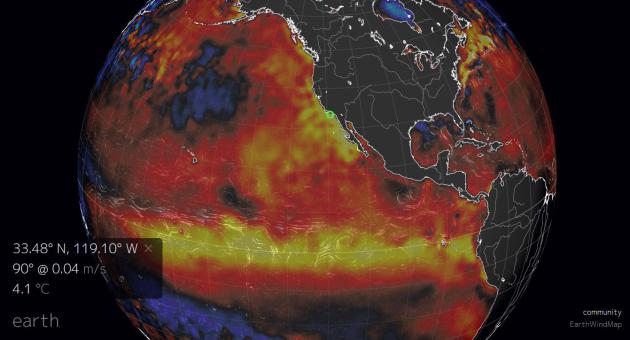


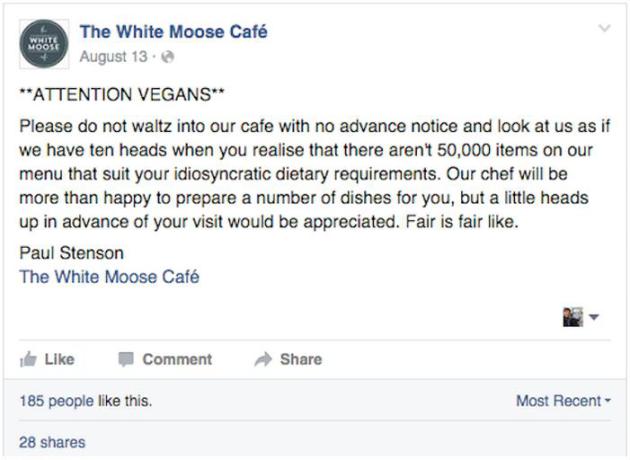
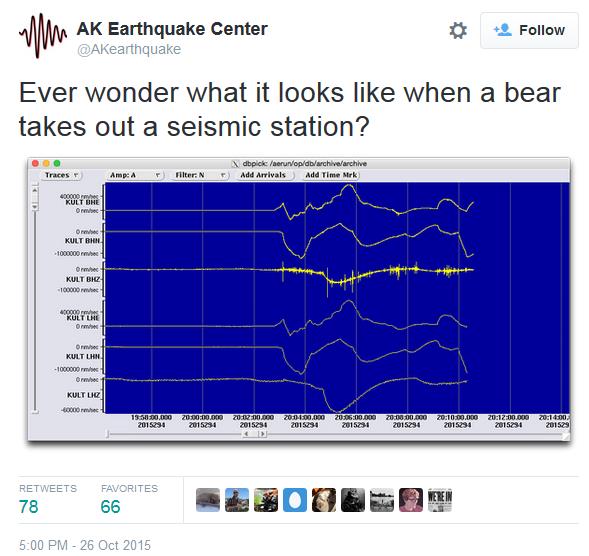

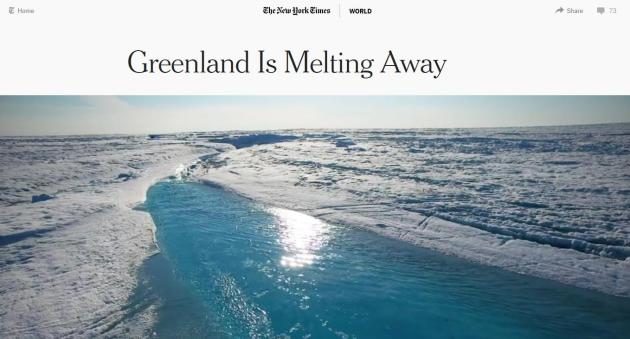
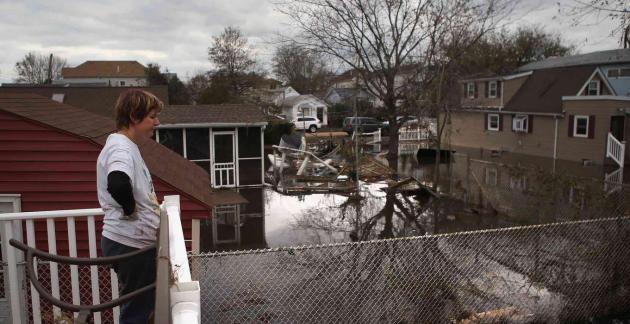

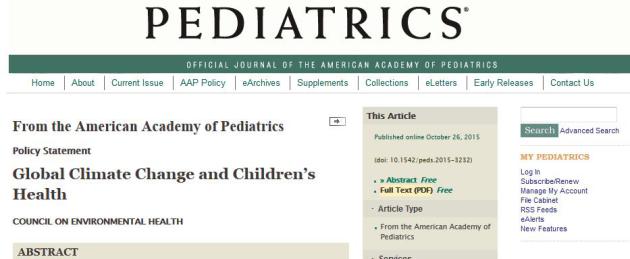
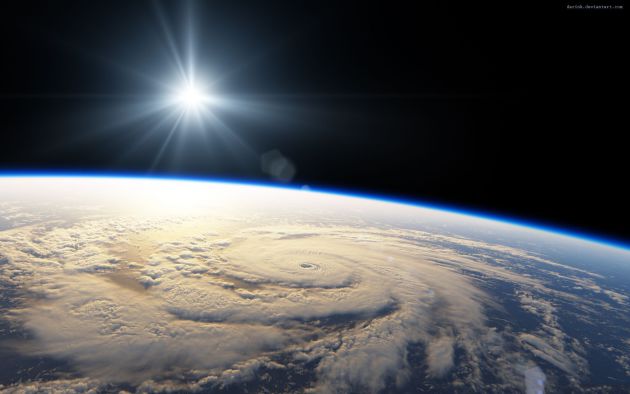
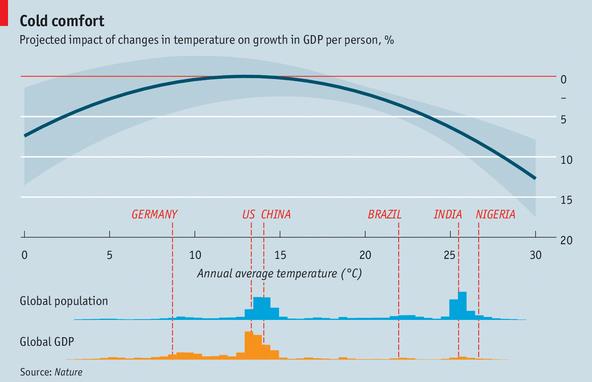

.jpg)

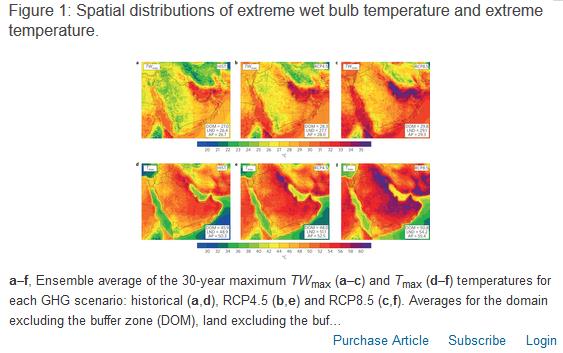





No comments:
Post a Comment